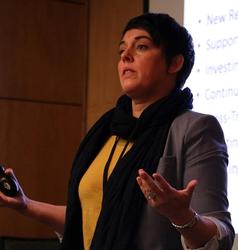
Who solves problems in your Company?
Every business has its challenges, and most organizations want quick fixes for them. Something that’s easy to implement, cost-effective, and requires few resources. Executives from lesser performing companies often return from visits to superior operations charged up to achieve similar results. In their enthusiasm, however, many overlook the fact that the effectiveness they admire comes from steady progress from the entire organization that takes time.
In the pressure to get things done, many leaders fear being patient. They focus on fighting fires rather than on instituting processes to solve and eventually prevent problems and to identify unsuspected opportunities. They work in micro-teams behind closed doors, assuming the problem and the solution, and often skip the necessary effort in communicating change to the organization.
Most companies that take this approach achieve unsatisfactory results, both because the organization does not truly understand its problems or the processes and resources needed to resolve them. Instead of better performance, the net effect is overworked employees who neither solve problems well nor do a good job of maintaining the day-to-day business.
In short, organizations are:
- Solving the wrong problems
- Trying to solve them in a bubble
- Failing to effectively communicate change
But everyone at your organization needs to become a problem solver.Together, managers and employees should take the initiative not just for identifying problems but also for developing better processes for fixing problems and improving products or services.
This approach does not depend on key senior executives taking charge and telling people what to do.Instead, the entire organization needs to learn how to learn. The key to this culture shift is understanding that there’s really no magic bullet or overnight fix – that this learning is a process.
Organizational leaders need to provide employees and managers a simple framework to help them learn how to solve problems as a team. The first step is restructuring your organization so each and every employee is focused on the customer and their needs, including:
1) Implementing a new organizational structure, breaking the organization out into teams to make it easier for everyone to focus on problems that matter to customers, instead of on individual functional goals.
2) Have each team talk with key customers to learn their needs and develop plans for responding. Let the team managers set their own agendas.
3) Executive leadership needs to ensure that teams always have direct access to them and reiterate that the organization is committed to finding resources to implement discovered solutions.
4) Authorize everyone to ignore crises and stop fighting fires. Predictably, your first month might be a disaster, with problems piling up and seemingly nothing to show in return. But before long, the learning process will begin to pay off.
Your goal is to utilize your new teams to fix fewer but higher leverage problems; fix problems faster; and learn from each experience to make subsequent efforts more effective. With your organizational framework in place, your teams can begin the process of collaborative problem solving through a four stage process:
1) Find the Bleed: When something goes wrong, the product or service is fixed before it is sent to the customer.
2) Determine the Cause: Identify root causes to problems, where front-line employees, not managers, take the lead because they understand better than anyone why problems are occurring.
3) Compare to Actions: Develop new or refined processes to keep problems from occurring, comparing what’s working today versus what needs to occur.
4) Confirm with Data: Anticipate new customer needs, by putting your problem-solving teams in front of customers to help them understand how their customer’s businesses work.
While this approach has worked for others, moving onto unfamiliar ground yourself can be a very different thing. The idea of turning to your people and asking them to solve business problems sounds less bold and risky now than it did 20 years ago, but it still can feel uncomfortable.
But one mark of a world-class organization is that its managers seem to have easy jobs. Operations flow smoothly, and people put more time and energy into making improvements than reacting to problems. Such an organization will typically spend 80% of its time on problem analysis and anticipating customer needs. In contrast, a lesser performer is likely to spend 90% of its effort in fighting fires.
Where does your company fall?
About the Author
Andrea’s 20-year, field-tested background provides unique, applicable approaches to creating more customer-centric
In addition to writing, consulting and coaching, Andrea speaks to leaders and industry organizations around the world on how to craft effective customer-facing operational strategies to discover new sources of revenues and savings.
Connect with Andrea to access information on her book, workshops, keynote speeches, training or consulting. More information is also available on www.pragmadik.com and www.nodisruptions.com.









